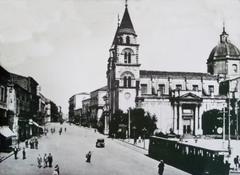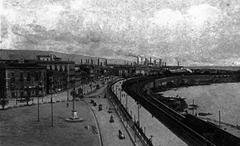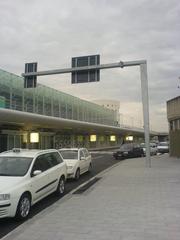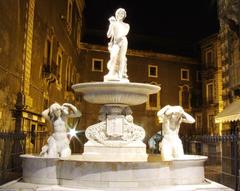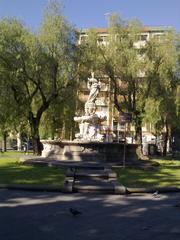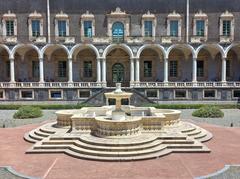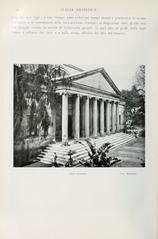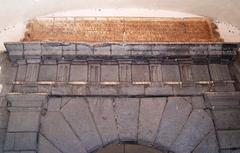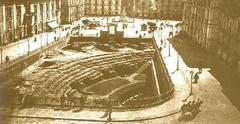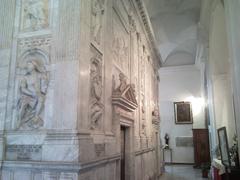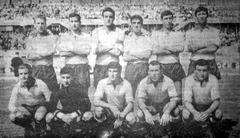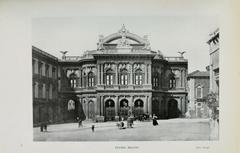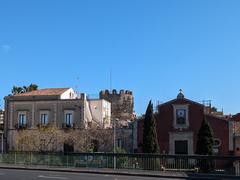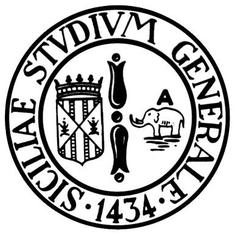
Porta Giuseppe Garibaldi: Visiting Hours, Tickets, and Essential Tips for Catania’s Historic Baroque Gate
Date: 04/07/2025
Introduction
Porta Giuseppe Garibaldi, also known as Porta Ferdinandea, stands as an enduring symbol of Catania’s Baroque heritage and resilient spirit. Built in 1768 to commemorate the royal marriage of King Ferdinand IV of Bourbon and Maria Carolina of Habsburg-Lorraine, this monumental gate marks the city’s capacity to rise from devastation—most notably the 1669 eruption of Mount Etna and the 1693 earthquake. Whether you’re a history buff, lover of architecture, or an explorer of Sicily’s cultural treasures, this guide provides a comprehensive overview of Porta Garibaldi’s history, architectural features, practical visitor information, and tips for a memorable experience (Around Catania; Italyscapes; Zainoo).
Table of Contents
- Historical Overview
- Architectural Highlights
- Visiting Porta Garibaldi
- Role in Civic Life & Events
- Preservation and Current State
- Nearby Attractions
- Frequently Asked Questions (FAQ)
- Summary & Travel Recommendations
- References & Further Reading
Historical Overview
Origins and Construction
Porta Giuseppe Garibaldi was commissioned in 1768 to celebrate the royal union of King Ferdinand IV of Bourbon and Maria Carolina of Austria. Esteemed Sicilian architects Stefano Ittar and Francesco Battaglia designed the gate, fusing dramatic Baroque style with local materials. The structure’s alternating bands of white limestone and black volcanic lava stone—sourced from Mount Etna—symbolize both Catania’s artistic ambitions and its volcanic landscape (Zainoo).
Located at the western end of Via Giuseppe Garibaldi in the Fortino district, the gate originally served as a ceremonial entrance to the city, replacing previous defensive structures lost to natural disasters. The area itself, known as Fortino, takes its name from a fortress built after the 1669 eruption to strengthen the city’s western defenses.
Transformation and Renaming
Initially called Porta Ferdinandea, the gate was renamed in 1862 to honor Giuseppe Garibaldi, a central figure in Italian unification, following his celebrated entrance into Catania. This shift in name and symbolism mirrors Sicily’s transition from Bourbon rule to integration into the Kingdom of Italy (Italyscapes).
Architectural Highlights
Porta Garibaldi is an outstanding example of Sicilian Baroque. Its most distinctive visual feature is the bichromatic façade, created with alternating bands of black lava and white limestone. Key decorative elements include:
- Central Clock & Eagle: Crowning the arch is a large clock (added in the 19th century) and a sculpted eagle, symbolizing vigilance and authority.
- Phoenix & Latin Motto: The phoenix and the inscription “Melior de cinere surgo” (“I rise again from the ashes”) encapsulate Catania’s resilience (Untold Italy).
- Baroque Ornamentation: Allegorical figures, coats of arms, and military trophies add to the gate’s visual richness.
The gate’s location at the end of a main axis (Via Garibaldi) creates a dramatic focal point, connecting the city’s civic and cultural heart.
Visiting Porta Garibaldi
Location & Getting There
Porta Garibaldi is situated at the intersection of Via Giuseppe Garibaldi and Via Sacchero, at the western edge of Catania’s historic core (goaskalocal.com). It is about a 15-minute walk (1.2 km) from the Cathedral of Sant’Agata along Via Garibaldi, and easily reached by public buses, taxis, or on foot.
Visiting Hours & Tickets
- Hours: The gate is an open-air monument accessible 24 hours a day, 7 days a week.
- Tickets: No admission fee or ticket is required to visit Porta Garibaldi.
Accessibility
The area around Porta Garibaldi is generally flat and accessible to visitors with mobility challenges, though some cobblestone surfaces may require caution. Public transport stops and taxis provide easy access.
Guided Tours & Tips
- Guided Tours: Several local tour operators offer walking tours that include Porta Garibaldi as part of broader explorations of Catania’s Baroque architecture (Etna Experience).
- Travel Tips:
- Visit in the early morning or late afternoon for the best lighting and fewer crowds.
- During the Sant’Agata festival in February, the arch becomes a focal point for religious processions and fireworks.
Photography
- The gate’s bold contrast of black and white stones is best captured during golden hour or at sunset.
- Wide shots from Piazza Palestro or down Via Garibaldi are especially striking.
Role in Civic Life & Events
Porta Garibaldi is not only an architectural landmark but also a living part of Catania’s cultural identity. It plays a prominent role during local festivals, most notably the Feast of Sant’Agata, when processions pass under the arch amidst vibrant celebrations (goaskalocal.com).
Preservation and Current State
Despite urban changes and the loss of some original Baroque context, Porta Garibaldi remains well-preserved. Recent enhancements to Piazza Palestro and ongoing conservation efforts by local authorities have helped maintain its status as a proud symbol of Catania’s history.
Nearby Attractions
- Cathedral of Sant’Agata: Catania’s main cathedral, located at the opposite end of Via Garibaldi.
- Piazza del Duomo: The central square, featuring the famous Elephant Fountain.
- Castello Ursino: A medieval fortress now housing the Museo Civico.
- Via Etnea: A lively shopping and dining street.
- La Pescheria Market: A bustling fish market offering a taste of local life.
Frequently Asked Questions (FAQ)
Q: What are Porta Garibaldi’s opening hours?
A: The monument is accessible 24/7.
Q: Is there a ticket or entrance fee?
A: No, visiting Porta Garibaldi is free of charge.
Q: Are guided tours available?
A: Yes, guided walking tours including Porta Garibaldi are available from local operators.
Q: Is it accessible for wheelchair users?
A: The immediate area is mostly accessible, but some cobblestones may require caution.
Q: What are the best times for photography?
A: Early morning and late afternoon offer the best natural lighting.
Q: What other attractions are nearby?
A: Key sites include Piazza del Duomo, the Cathedral of Sant’Agata, Via Etnea, and Castello Ursino.
Summary & Travel Recommendations
Porta Giuseppe Garibaldi embodies Catania’s rich historical narrative, Baroque elegance, and spirit of renewal. Its striking design, open accessibility, and vibrant context in the Fortino district make it a must-see for any visitor to Catania. Enhance your visit with a guided tour, explore nearby attractions, and time your visit for golden hour photography or to coincide with the city’s lively festivals. For a deeper experience, use digital resources such as the Audiala app for curated walking tours and insider tips (Around Catania; goaskalocal.com; Untold Italy).
References & Further Reading
- Porta Garibaldi on AroundCatania
- Porta Garibaldi on Italyscapes
- Porta Garibaldi on Zainoo
- Travel Guide to Catania on goaskalocal.com
- Things to do in Catania Sicily on Untold Italy
Enhance your journey with up-to-date guides and exclusive content by downloading the Audiala app. For more on Catania’s Baroque treasures, related attractions, and travel inspiration, explore our other articles and follow us on social media.


